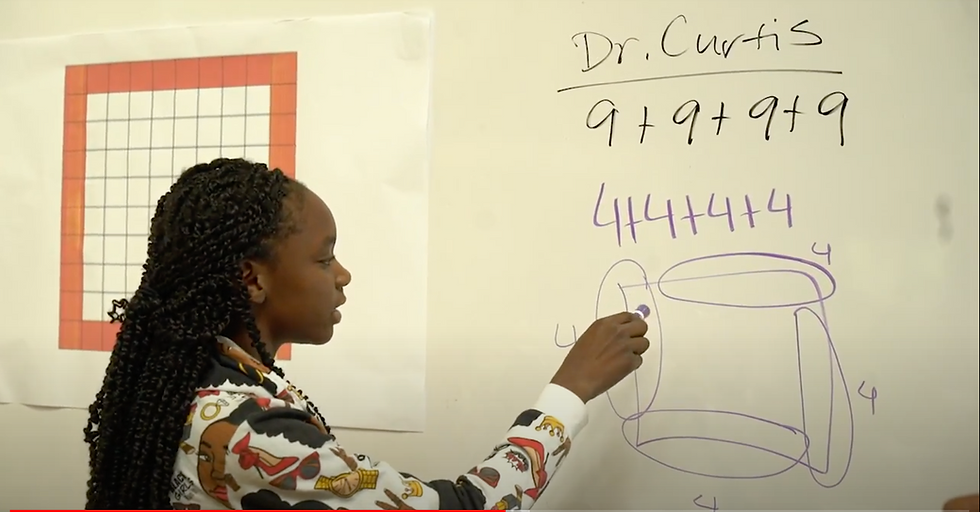Looking at Student Work
- Yay Math!
- Oct 8, 2019
- 3 min read
Updated: Jun 24, 2020
Looking at Student Work
This is the fourth post in a series about using lesson study to conduct a research lesson. To start at the beginning click here.
A unique feature of lesson study research lessons is that the lesson is designed and “owned” by the whole team. Even though one teacher volunteers to teach the lesson to one (or two) of their classes, the team assumes responsibility for how well the lesson works for the students. This shared responsibility takes (some of) the pressure off of the teacher who volunteers to teach the lesson. It also begins to create a community focused on supporting our students, instead of my students or your students.
During their first meeting the team discussed their hopes and dreams for students. In their second meeting the team looked closely at student work and shared empathy interview data from select focus students. Sarah, one of the teachers on our first lesson study team, volunteered to teach the first research lesson. She chose her 10th grade class and brought samples of work from focus students so her team could ground their lesson study cycle in student thinking. Specifically, she chose work from students whose thinking she wanted to understand better. All teachers have students that they relate to easily, however, the most significant learning comes when we make time to understand the thinking of students who might fly under the radar in our class, or the students that think differently from us.
The team used the following prompts to analyze student work:
What are we noticing about our students’ mathematical thinking?
What mathematical strengths do we see evidence for?
What mathematical ideas do they understand?
What mathematical skills do they have?

In order for the team to answer these questions, it was important for the work samples to include evidence of student thinking. It is difficult to understand how a student made sense of the mathematics from a circled answer to a multiple choice question or a lone answer with no supporting work. A good choice is to bring tasks that invite students to “show all your thinking...” or asks them to “write down everything you know about...” These prompts provide richer student thinking data for teams to explore.
The team analyzed the student work samples and identified focus students' mathematical strengths. For example, they noted when students made connections between different ideas, organized information in useful ways, or demonstrated perseverance in problem solving. Afterward, they discussed what mathematical understandings and skills they could see in the student work. What did students already understand? Where were their areas for growth? How could this inform our research lesson?
By looking at student work the team was thinking deeply about how students were making sense of core mathematical concepts. This practice contributes to teachers’ Mathematical Knowledge for Teaching, the important understanding of how students learn mathematics that is necessary for teaching and which is distinct from the ability to just do math ourselves.
For the second half of the meeting the teachers discussed empathy interview data from focus students. Ideally each member of the research team has the opportunity to interview one of the focus students, but in a pinch the students’ teacher can conduct the interviews and bring the notes to the meeting. Using the interview data, the team developed goals for each focus student in terms of their sense of purpose and self, leadership and collaboration, and mathematical understanding and skills.
This deeper understanding of their students’ lived experience and mathematical understanding provided a solid foundation for the next step in the inquiry process: determining a research question and theory of action.
For educators looking to try lesson study in their own contexts, we found that:
Looking at student work provided the research team with valuable insight about their focus students’ mathematical strengths and their understanding of key mathematical concepts
Conducting empathy interviews provided an opportunity for the team to hear about the lived experiences of their focus students and provided context for understanding their work on a deeper level
Previous week: Hopes and Dreams for Students
Daisy Sharrock works at the Center for Research on Equity and Innovation at the High Tech High Graduate School of Education, and is part of a Student-Centered Learning Research Collaborative-sponsored research team that is currently engaged in the following study: Leveraging the Power of Improvement Networks to Spread Lesson Study. Read more about their current study here. We are grateful to JFF, KnowledgeWorks’, and the Student-Centered Learning Research Collaborative and its funders for their support. Learn more at sclresearchcollab.org




Comments